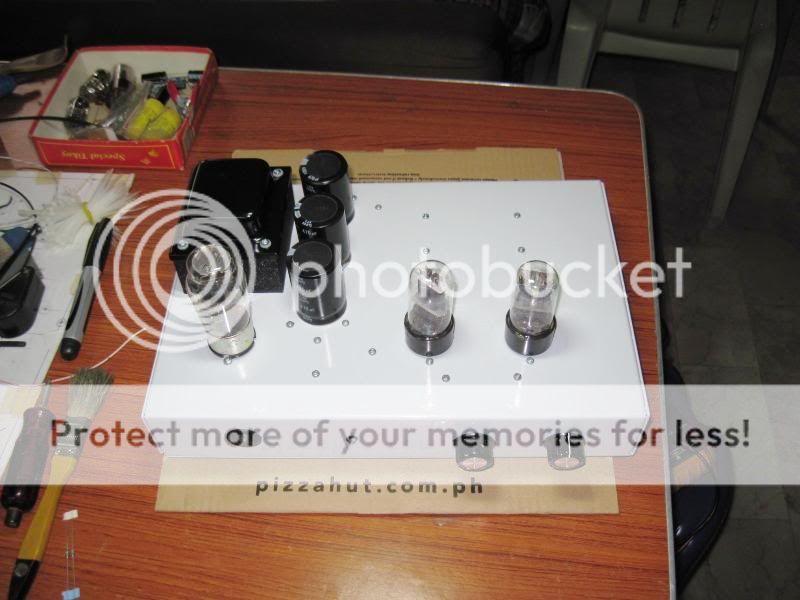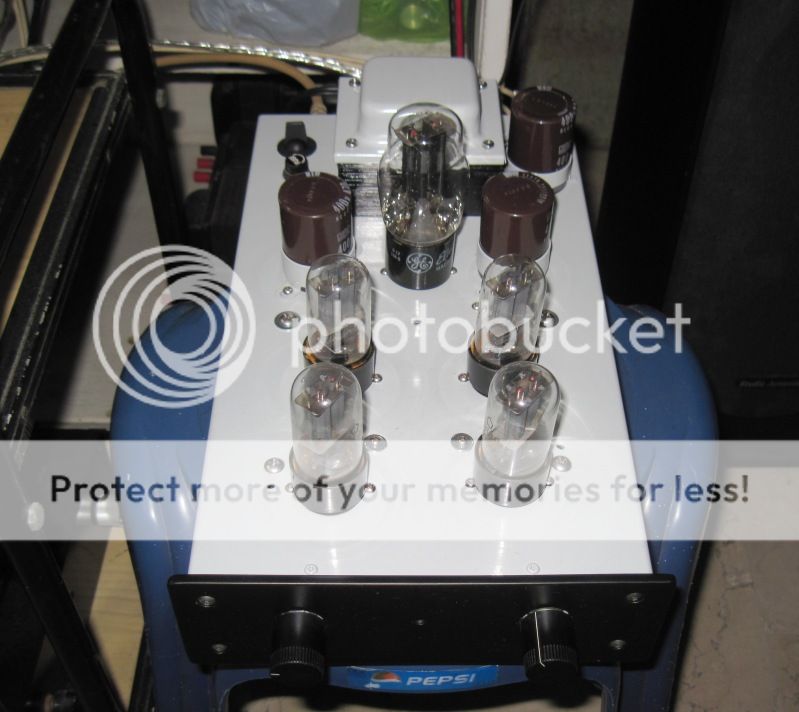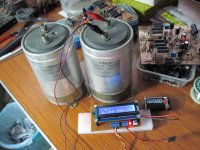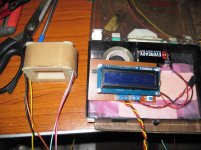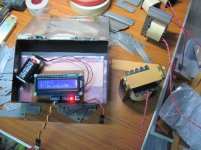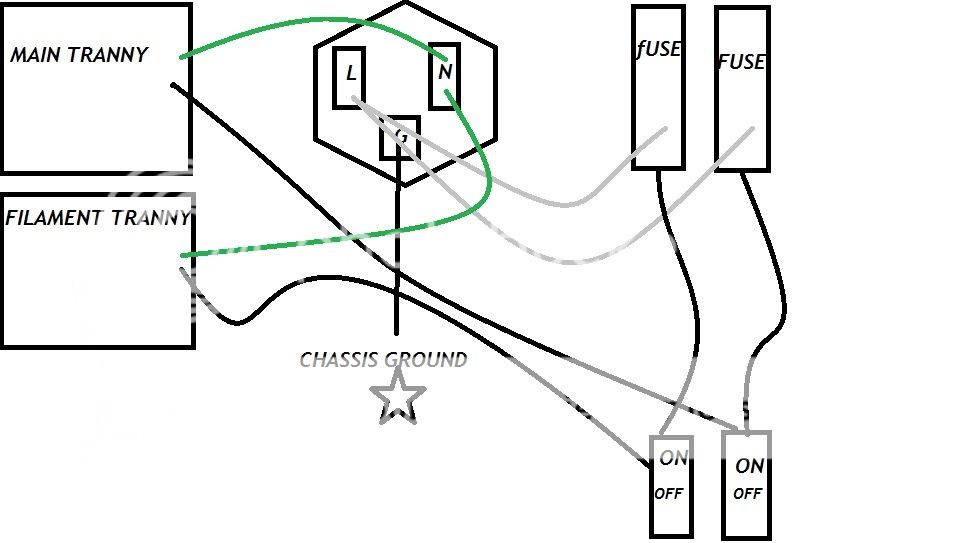a filter choke is a must in all my tube builds...
I've noticed that Filter chokes are used a lot. I'm currently moving and all my equipment is packed away. I don't even think I have a schematic to see which resister to replace for the choke. Would be nice to find out.
Thanks for that information!as long as the piv rating is about 1000 volts, it should be good..
Wow! Your preamp is beautiful! Great work!

I am now gathering parts for the ccda project. Another question please! Does c5 have to be 150uf? Or can i use 100uf instead. I have a nos elna in my box and i would love to use it for the project. However, I was wondering changing value of c5 would affect the performance.
thanks
you can use whatever you have, 100uf is plenty enough...
me, i get those caps from discarded atx power supplies and crt type monitors and color tv's...
me, i get those caps from discarded atx power supplies and crt type monitors and color tv's...
thanks! for my learning purpose, what is the significance of decoupling capacitor value? is 150uf just a random number? I am trying to learn.you can use whatever you have, 100uf is plenty enough.
i get those caps from discarded atx power supplies and crt type monitors and color tv's...
i am all for recycling! 😀
of course the higher the capacitance the lower the ripple voltage....
recycling parts that are good also ensures you are not getting fakes....😀
recycling parts that are good also ensures you are not getting fakes....😀
Yaho, the coupling capacitor value in Aikido circuit is based on the load impedance and the cutoff frequency you prefer. So..... my amp has 47K input impedance and I want a cutoff of 40Hz, the formula is :
cap = 159155 / freq / resistance
cap = 159155 / 40 / 47000
cap = 0.084uF
AJT, do you have a cutoff of using older caps or parts? I ask because caps have a shelf life and curious if you select them by age or ... ? I think its great that you are recycling parts, I do it too but mainly on switches,
transformers and wires.
cap = 159155 / freq / resistance
cap = 159155 / 40 / 47000
cap = 0.084uF
AJT, do you have a cutoff of using older caps or parts? I ask because caps have a shelf life and curious if you select them by age or ... ? I think its great that you are recycling parts, I do it too but mainly on switches,
transformers and wires.
Last edited:
Yaho, the coupling capacitor value in Aikido circuit is based on the load impedance and the cutoff frequency you prefer. So..... my amp has 47K input impedance and I want a cutoff of 40Hz, the formula is :
cap = 159155 / freq / resistance
cap = 159155 / 40 / 47000
cap = 0.084uF
AJT, do you have a cutoff of using older caps or parts? I ask because caps have a shelf life and curious if you select them by age or ... ? I think its great that you are recycling parts, I do it too but mainly on switches,
transformers and wires.
Remember its a balance between "good" bass response and having the amp struggle to maintain a constant bias if the value is too high.
I am running an older aikido with 0.47uF orange drops bypassed by 1uF film caps and after lots of tinkering this seems to be the sweet spot.
AJT, do you have a cutoff of using older caps or parts? I ask because caps have a shelf life and curious if you select them by age or ... ? I think its great that you are recycling parts, I do it too but mainly on switches,
transformers and wires.
not more than 5-10 years old, as long as they test good,
i use a cap tester to measure and screen recycled caps....
i do not bother with small ecaps as they are cheap to buy new anyway....
i also buy new caps....
Attachments
Remember its a balance between "good" bass response and having the amp struggle to maintain a constant bias if the value is too high.
I am running an older aikido with 0.47uF orange drops bypassed by 1uF film caps and after lots of tinkering this seems to be the sweet spot.
yes, one rule of thumb for coupling caps that i learned from the tube gurus here, "use just enough capacitance, not more..."
not more than 5-10 years old, as long as they test good,
i use a cap tester to measure and screen recycled caps....
i do not bother with small ecaps as they are cheap to buy new anyway....
i also buy new caps....
Is that a diy/ebay kit? How is is working for you? I been tempted to get one.
Yaho, the coupling capacitor value in Aikido circuit is based on the load impedance and the cutoff frequency you prefer. So..... my amp has 47K input impedance and I want a cutoff of 40Hz, the formula is :
cap = 159155 / freq / resistance
cap = 159155 / 40 / 47000
cap = 0.084uF
AJT, do you have a cutoff of using older caps or parts? I ask because caps have a shelf life and curious if you select them by age or ... ? I think its great that you are recycling parts, I do it too but mainly on switches,
transformers and wires.
There are many good reasons to use 40hz as a cutoff and that value may be an example, but if you are designing for full range you might want to consider a lower value. I usually shoot for a cutoff between 5 and 10 Hz. That band will allow you a choice of a couple standard values.
Captn Dave, what cutoff would you suggest for Maggies that go down to 40Hz (or so it says on spec.) ?
Cutoff? It's no brick wall but a slope that sets in at 6dB/oct. The frequency you calculate has a 3dB drop, at higher frequencies you already start to loose power. More important is the fase shift that -besides technical problems- is noticable in for instance the kick of a base drum or low notes on a concert piano. For a pre amplifier F-3dB is best kept below 10Hz.
I agree with Disco. Like I said if you pick a cap that yields a corner frequency (cutoff) between 5 and 10Hz you should be good to go.
Like Disco said it's no wall like the word cutoff would imply. There is another term, corner frequency, that means the same thing and is a better descriptor of the phenomena. I vote it be used henceforth.
Like Disco said it's no wall like the word cutoff would imply. There is another term, corner frequency, that means the same thing and is a better descriptor of the phenomena. I vote it be used henceforth.
Maybe someone can help. I rebuilt my aikido preamp and I'm getting a buzzing from the heaters. not a hum! a Buzzing. Now the buzzing goes away when I turn up the volume.
- Home
- Amplifiers
- Tubes / Valves
- Building a Aikido preamplifier
